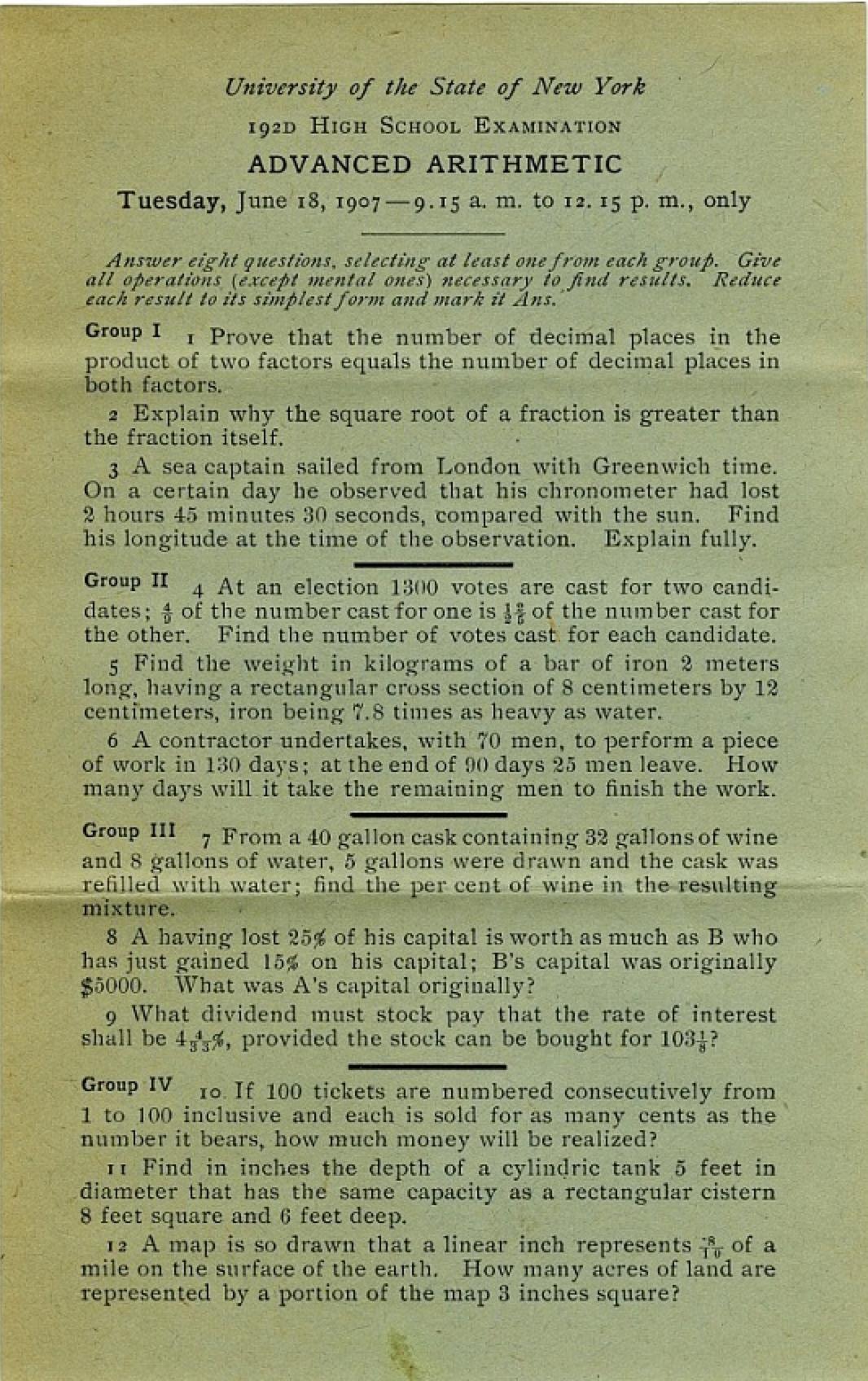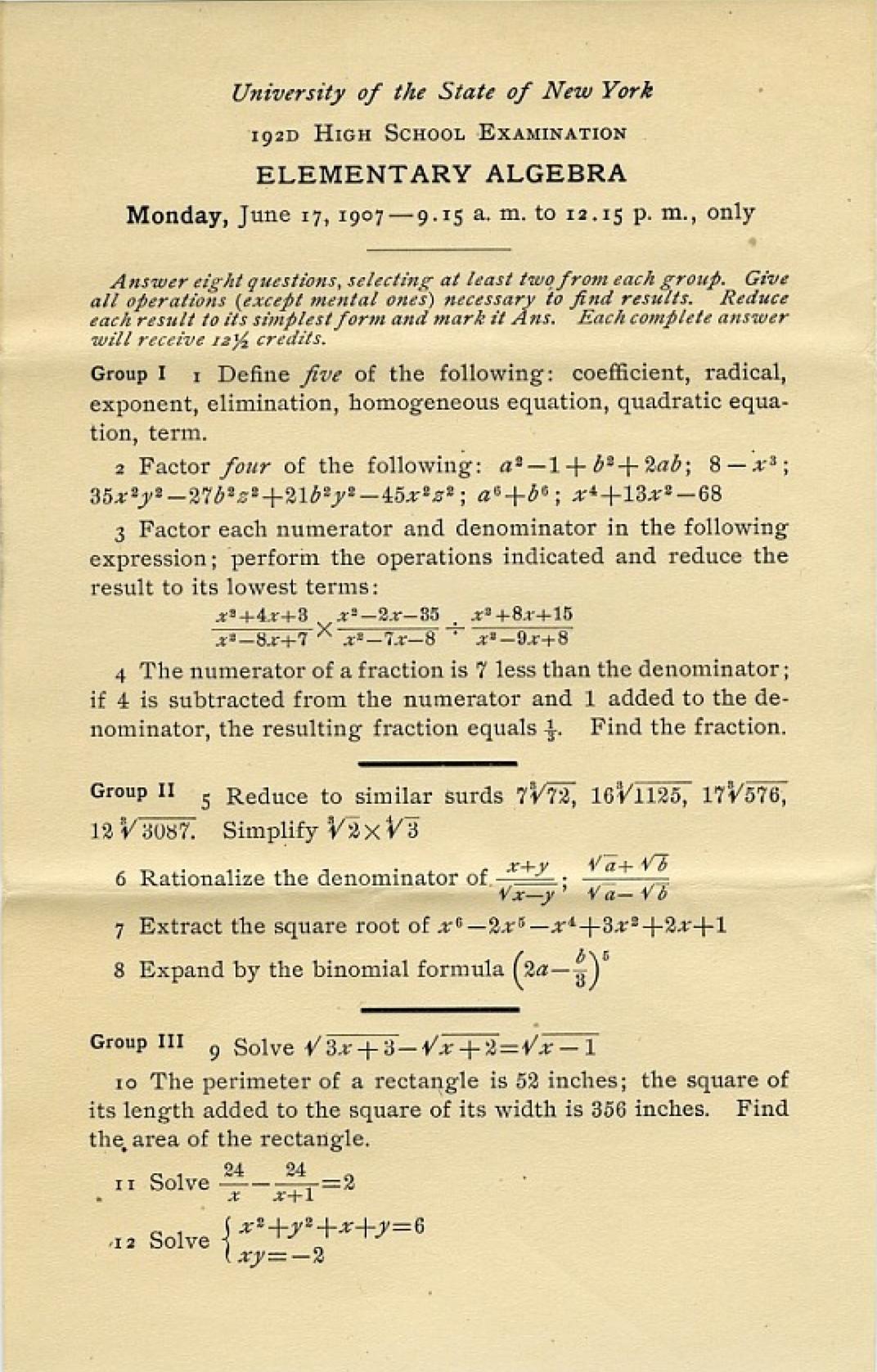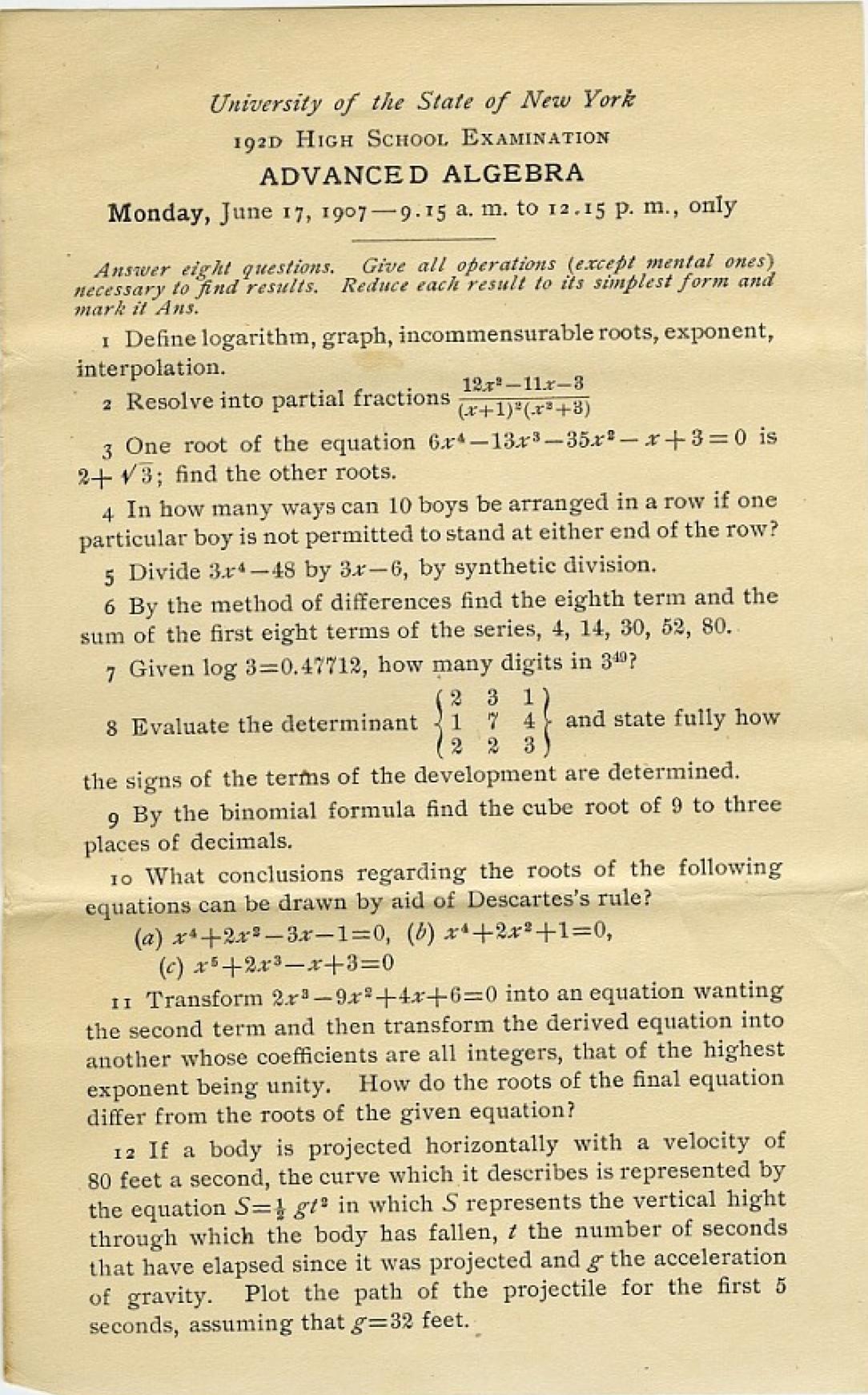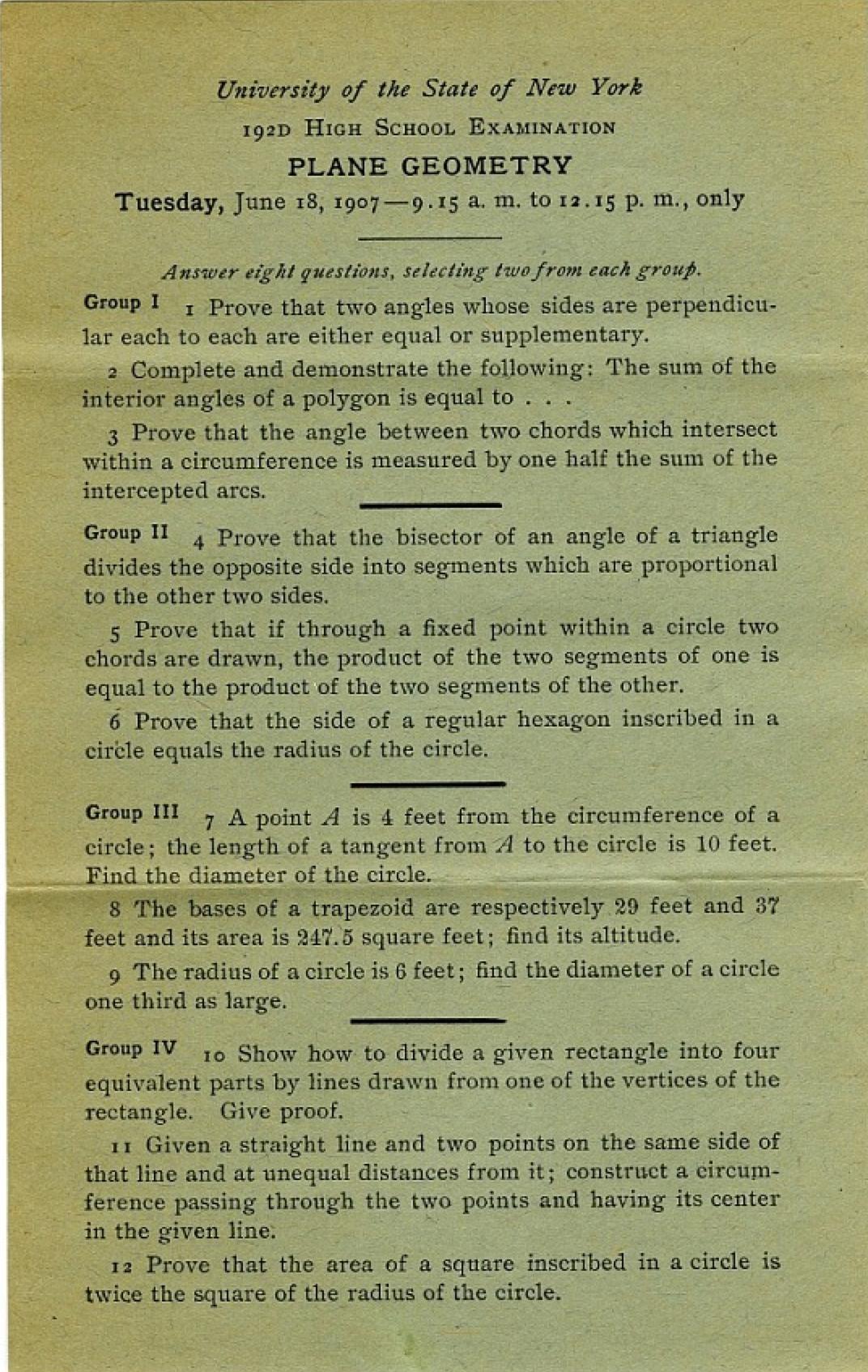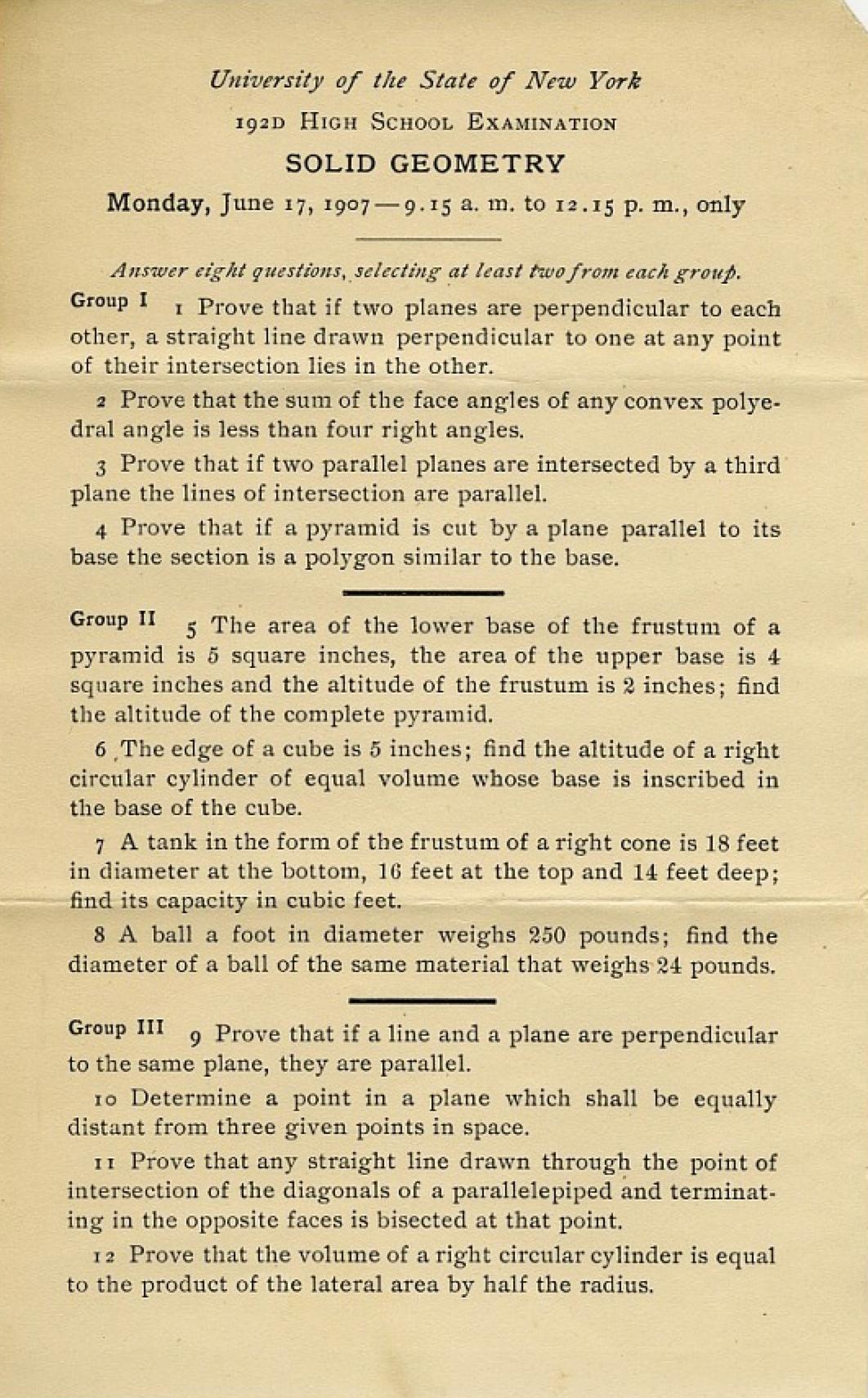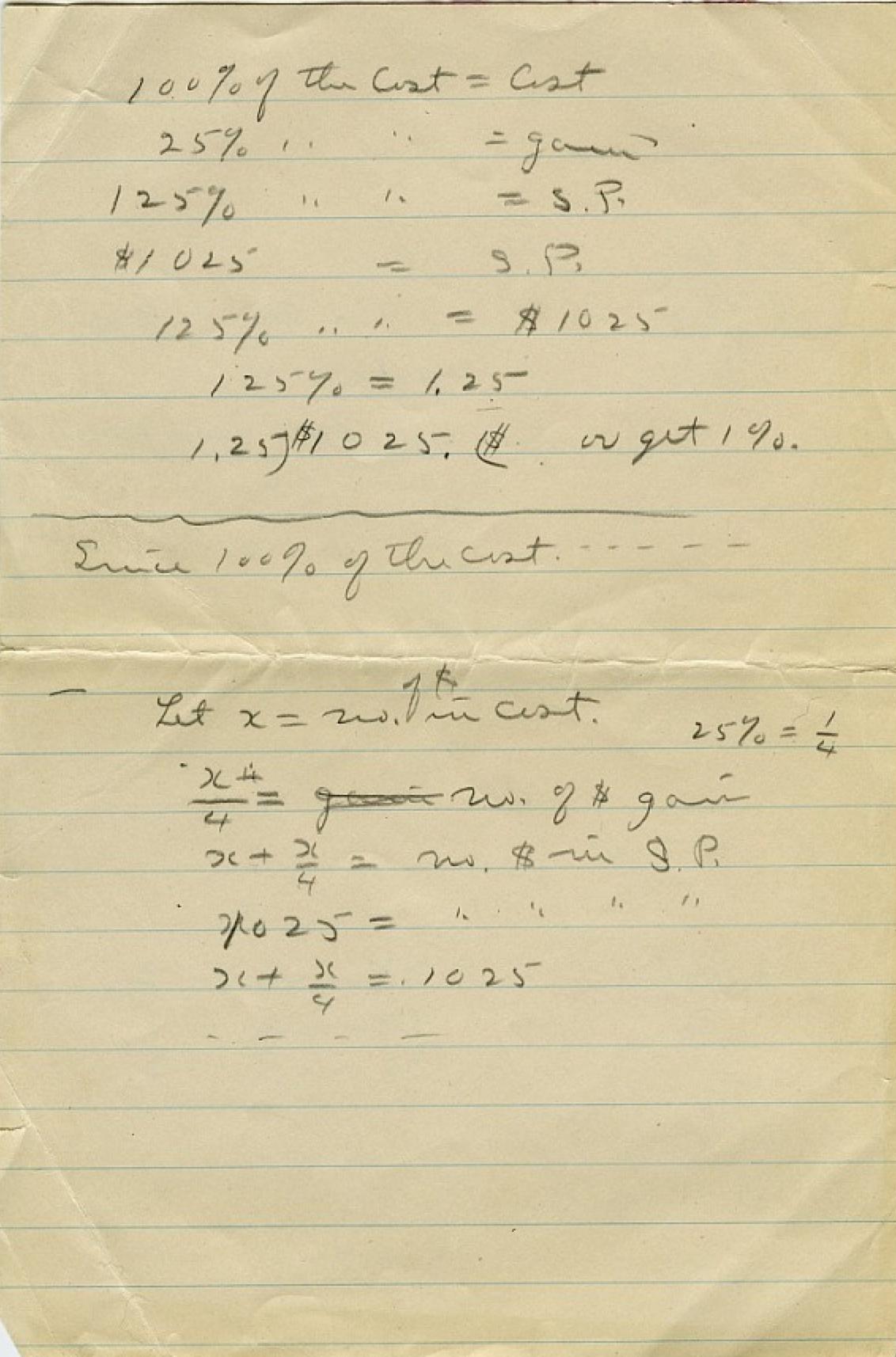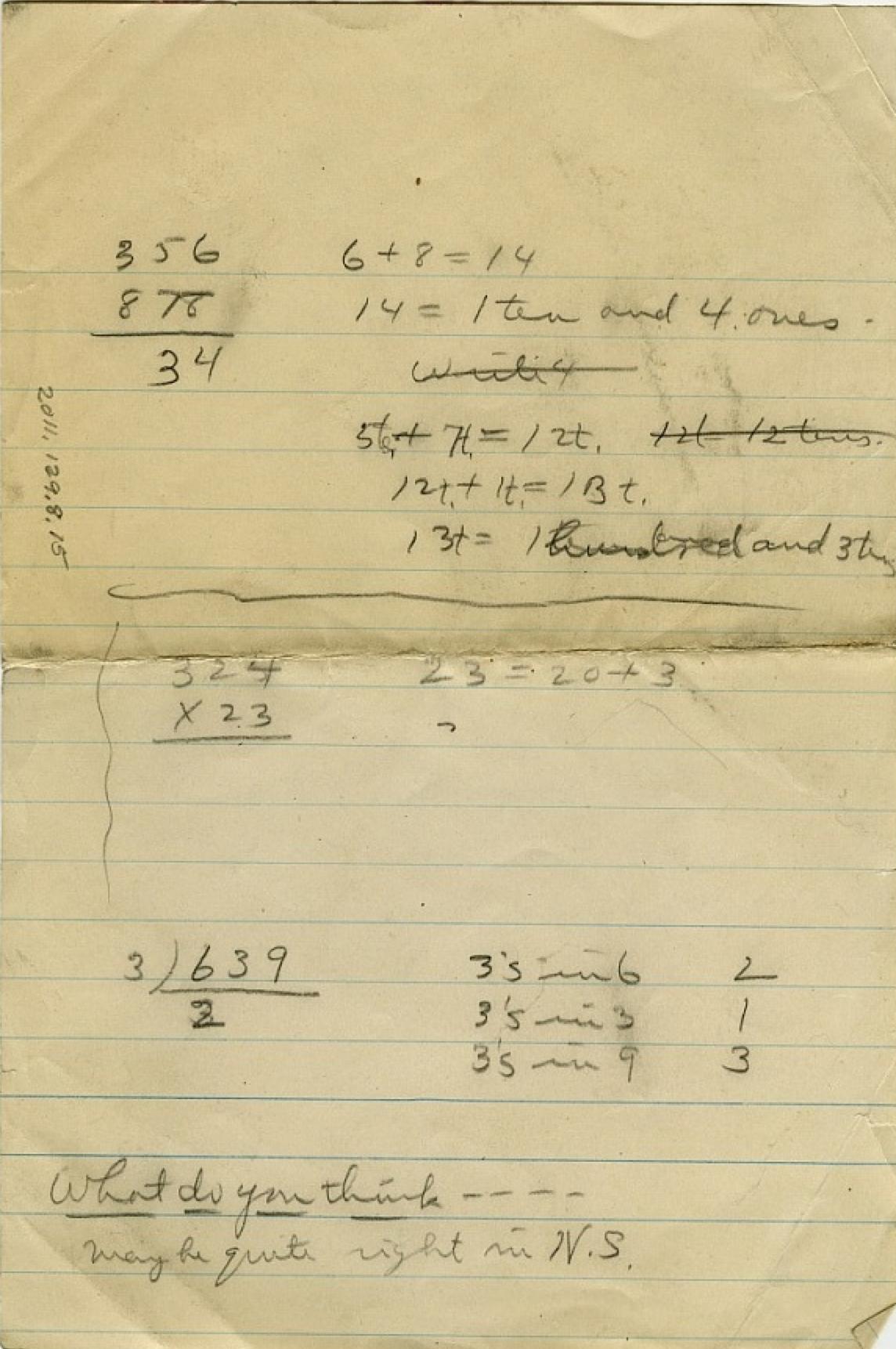1907
New York State Regents Exams in Mathematics
Exams from yesteryear
Standardized tests and examinations have long been an important tool allowing teachers and administrators to evaluate student knowledge and the effectiveness of educational practices. While modern standardized exams employ multiple-choice questions and automated grading, the exam sheets of yesteryear were answered and graded by hand. The National Museum of American History at the Smithsonian holds a fascinating collection of standard examinations in mathematics administered in the state of New York in the early decades of the 1900s.

In the 1860s, the Regents of the University of the State of New York began planning examinations to test the knowledge and abilities of students graduating from high school. Examples of these examinations in mathematics were collected by Brooklyn high school mathematics teacher L. Leland Locke between 1907 and 1919. This collection of problems, grouped into arithmetic, algebra, geometry, trigonometry and algebra, provides insight into the very high level of mathematical mastery expected of students graduating from high school in the early 20th century.
